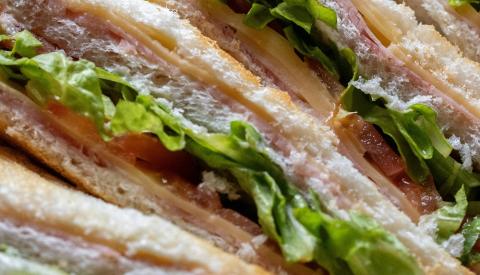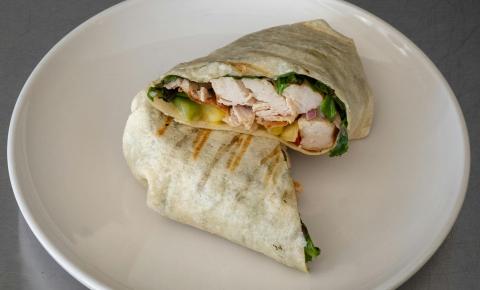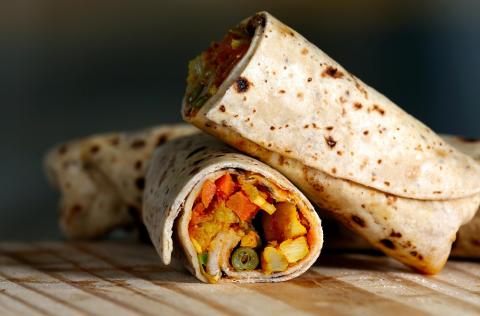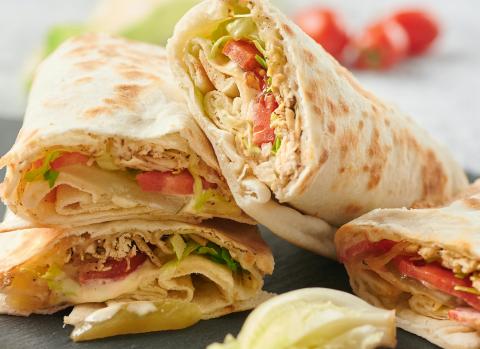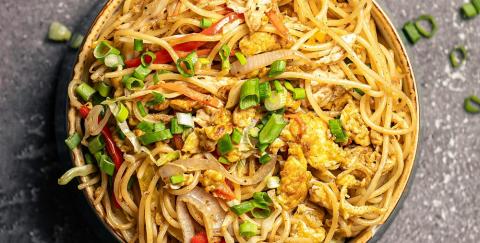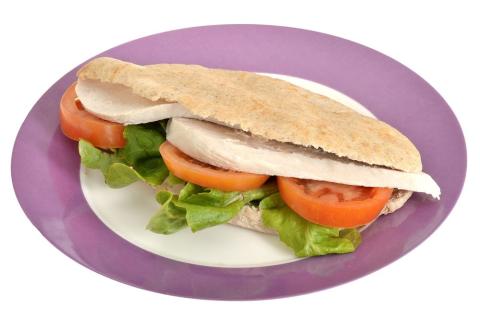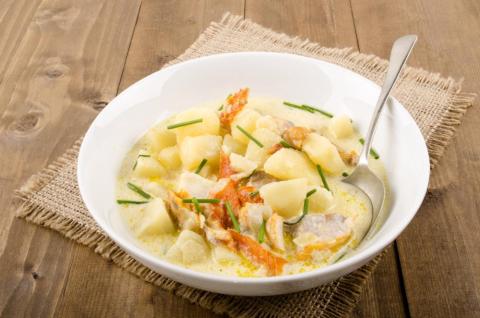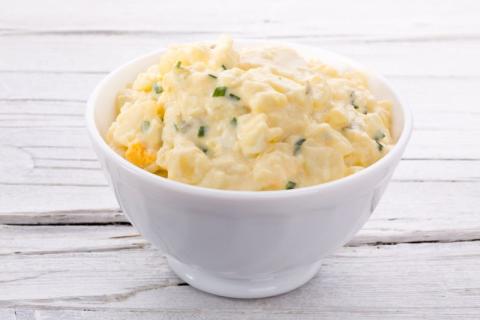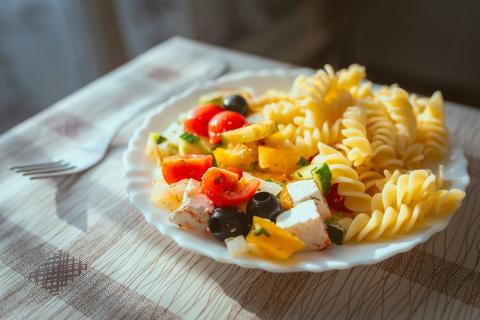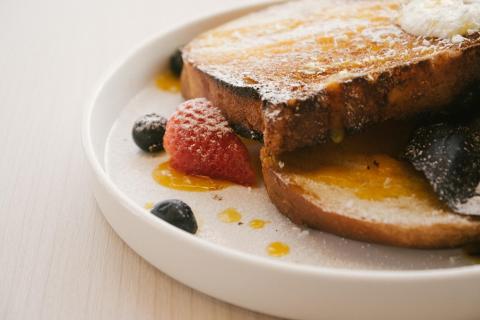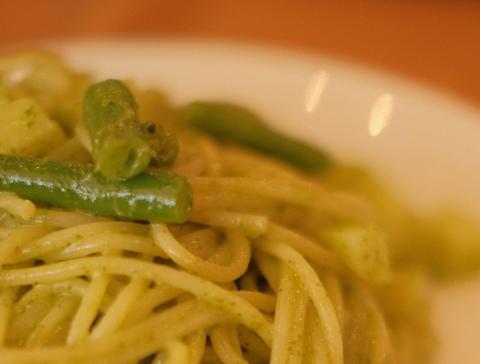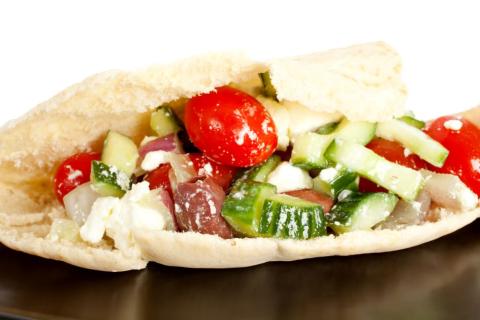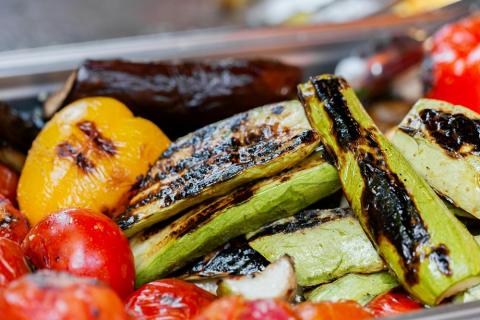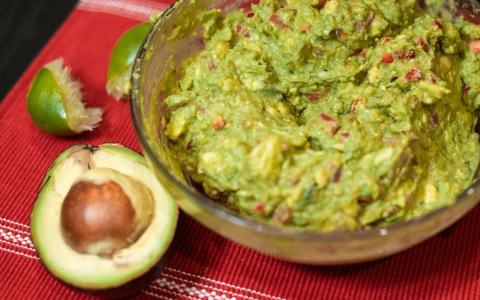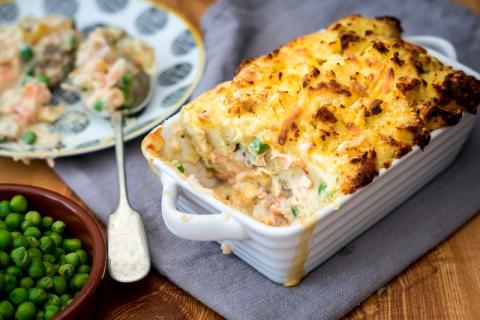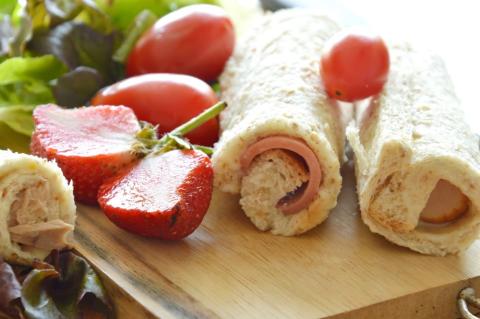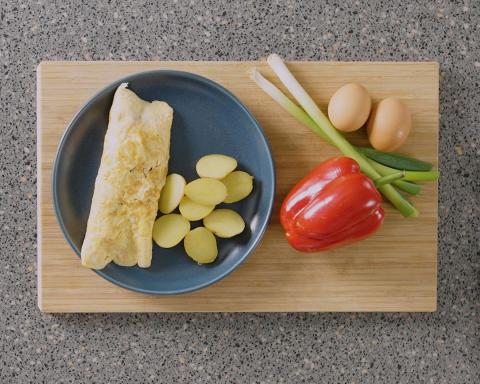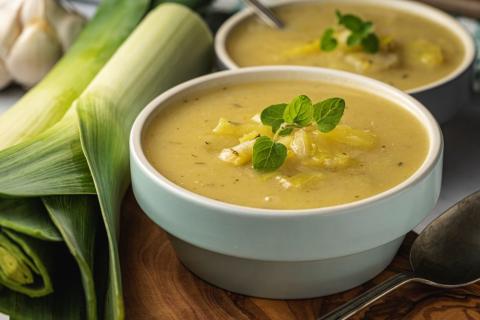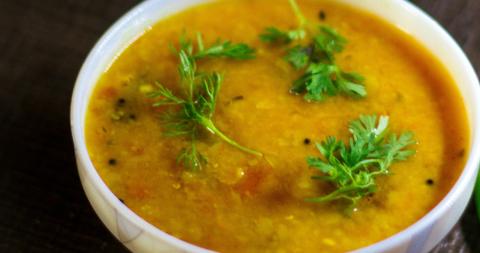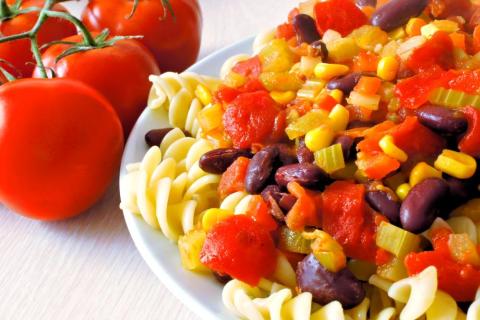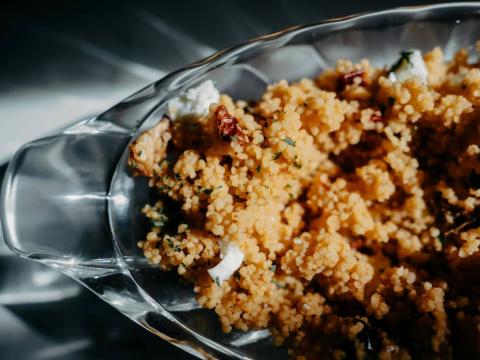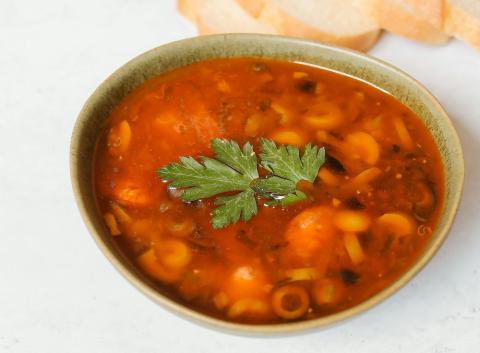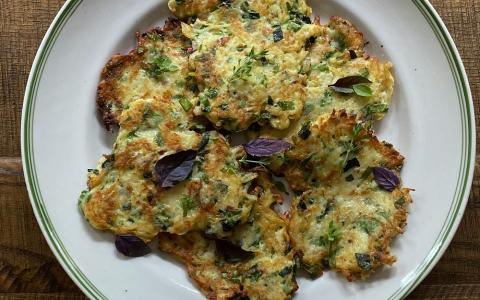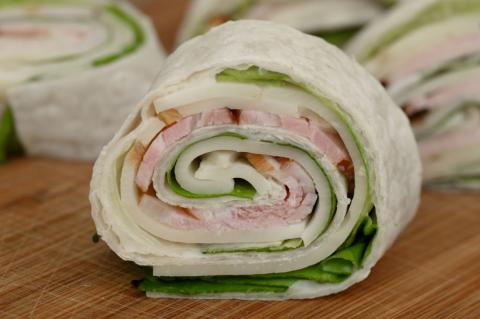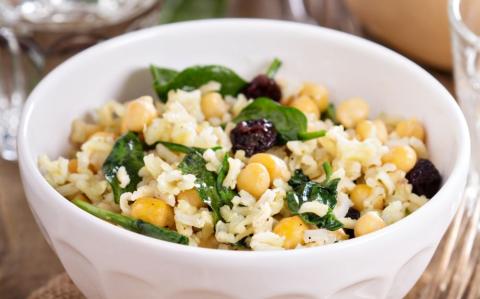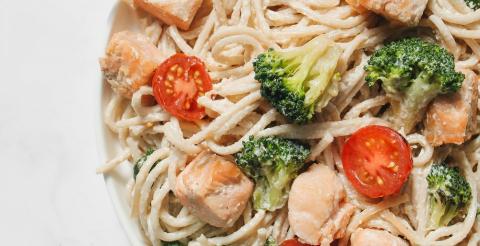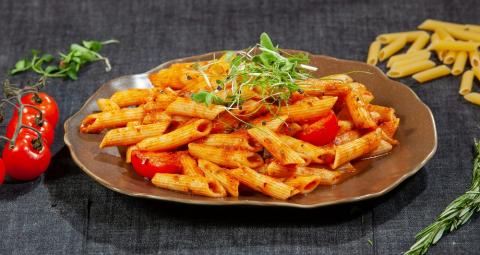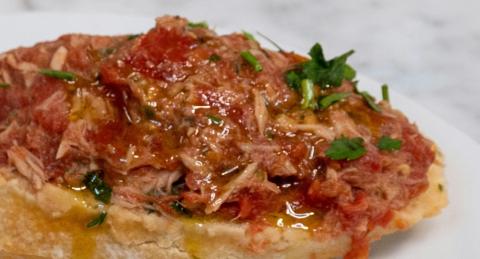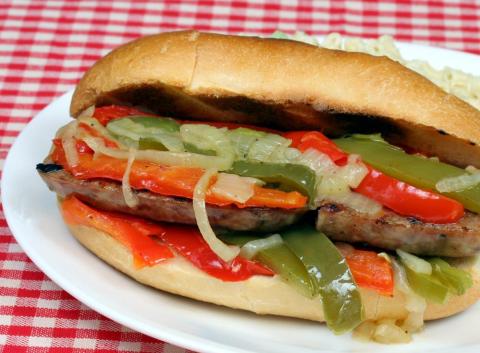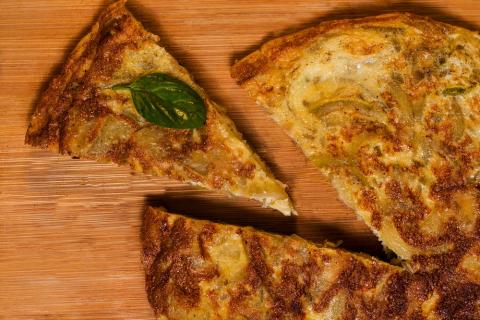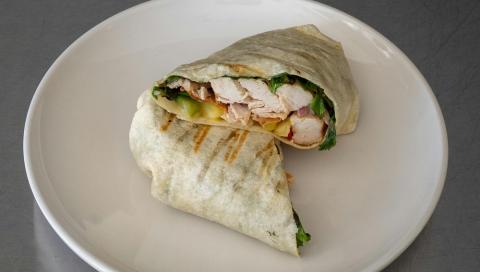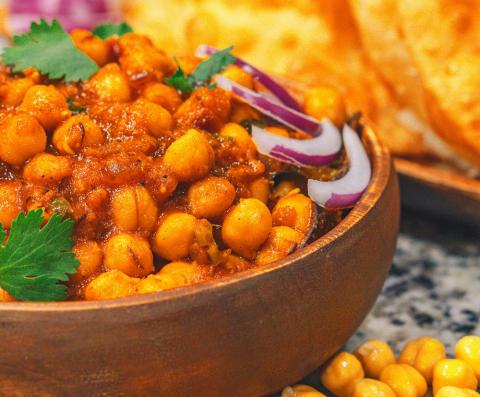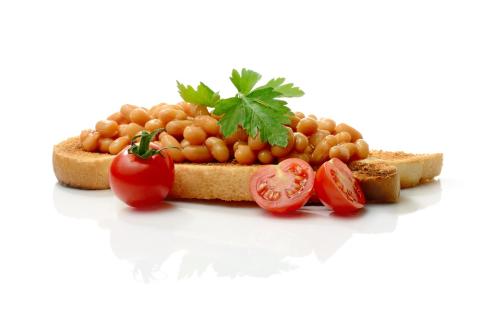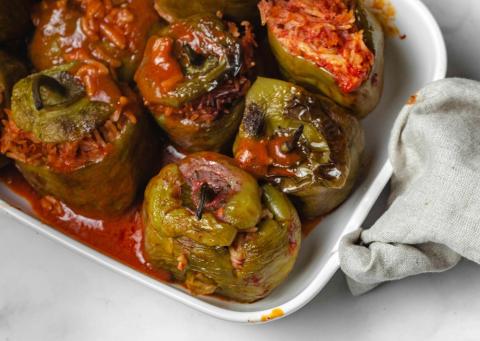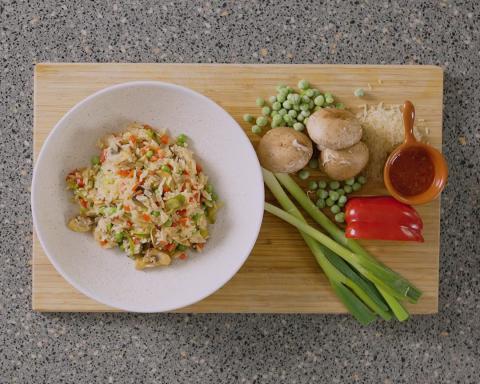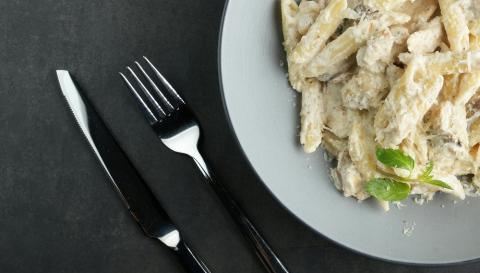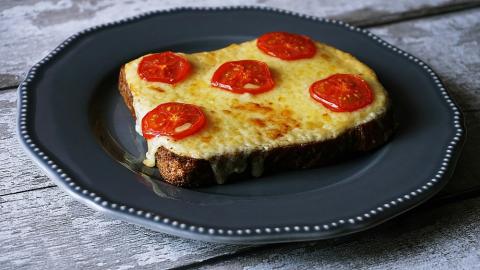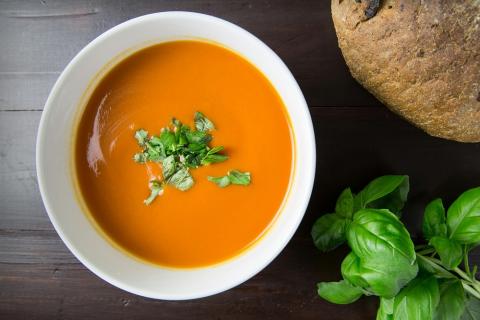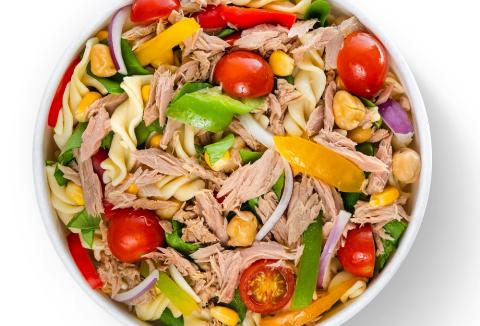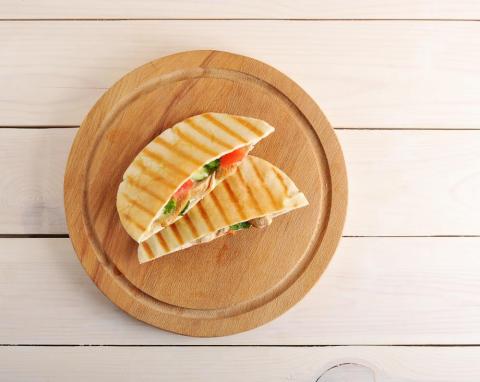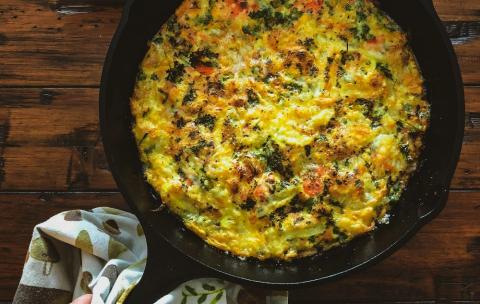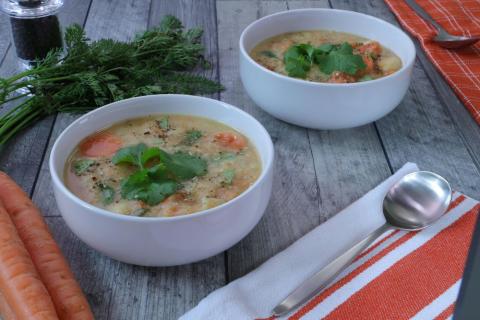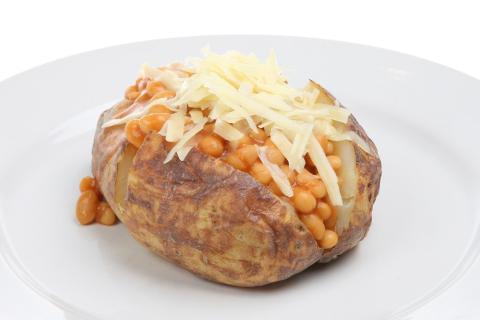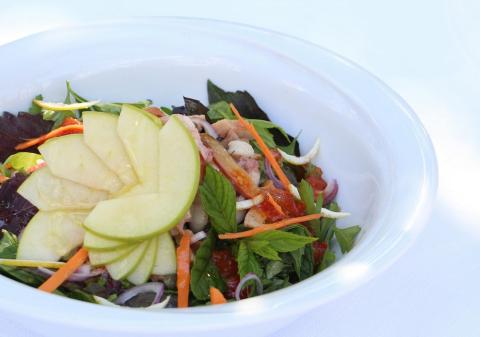- 5 Level Tablespoons (100g) Plain Flour
- 1 Level Teaspoon (4g) Baking Powder
- 1 Medium Egg
- 7 Tablespoons (100ml) Semi-Skimmed Milk
- 3 Tablespoons (100g) Frozen Sweetcorn
- 3 Tablespoons (100g) Frozen Peas
- 1 (10g) Spring Onion
- 1 Pinch Black Pepper
- 2 Teaspoons (6g) Vegetable Oil
- 2 Heaped tablespoons (60g) Half Fat Crème Fraîche
Ingredients
Allergy Disclaimer
Always check the label of each ingredient for allergy warnings.
Method
- Sieve the four and baking powder into a large bowl. Crack the egg into the bowl then add the milk and mix well.
- Trim the tops and tails of the spring onion and then slice. Add spring onion, peas and sweetcorn to the bowl and mix well. Hold back a small handful of spring onion for garnishing at the end.
- Add black pepper to taste and mix in.
- Add half the oil to a frying pan and heat on a medium heat. Add a tablespoon of mixture to the pan and press down with a spatula or the back of a spoon. Repeat until you have 4 fritters.
- Turn the fritters over after approximately 5 minutes or until golden brown. Once cooked, repeat for the remainder of the mixture. It should make 8 fritters.
- Garnish with spring onion and serve while hot with crème fraîche for dipping.
Time Saver Tips
Why not prepare this in advance and keep in the fridge until you’re ready to cook it? Talk about an easy meal!
Cost Saver Tips
This is a great recipe to use any leftovers you’ve got. You could try using ingredients like red onions and finely chopped peppers or courgette, too. Don’t worry if you don’t have plain flour – any type of flour works, including wholemeal or cornflour. If using self-raising, just leave out the baking powder. Soured cream can be used instead of half fat creme fraiche, however the fat content will be a little higher. Alternatively you could try the fritters with salsa or guacamole.
Tips for Kids
Fritters are great on their own as a light meal. You could even serve them with other vegetables and potatoes or rice to make this into a main meal. Or why not see if your wee one likes them in a bread roll with salad? Yum!
Nutritional Information
Based on a single serving of 125g (% of an adult's reference intake)
Energy
188 kcals ( 9 %)
793 kJ ( 9 %)
Fat
2.4 g ( 12 %)
Saturates
27.2 g ( %)
Sugar
3.8 g ( 4 %)
Salt
0.4 g ( 6 %)
Detailed nutritional information
| Per 100g | Per 125g serving | |
|---|---|---|
| Energy Kcals | 160 | 188 |
| Energy Kj | 634 | 793 |
| Protein | 5.9 g | 7.4 g |
| Total Fat | g | g |
| Saturated Fat | 1.9 g | 2.4 g |
| Carbohydrates | 21.8 g | 27.2 g |
| Total Sugars | 3 g | 3.8 g |
| NSP Fibre | 2.4 g | 3 g |
| Sodium | 124 mg | 155 mg |
| Salt | 0.3 g | 0.4 g |
Find out about nutritional labelling
Nutrition labels on the front of packaging
- Most of the big supermarkets and many food manufacturers display nutritional information on the front of pre-packed food.
- Front of pack nutrition labels provide information on the number of grams of fat, saturated fat, sugars and salt and the amount of energy (in kJ and kcal) in a serving or portion of a recipe.
- The labels also include information about reference intakes (expressed as a percentage) which are guidelines about the approximate amount of particular nutrients and energy required for a healthy diet.
- The colour coding tells you at a glance if the food has high (red), medium (amber) or low (green) amounts of fat, saturated fat, sugars and salt.
- The more greens on the label, the healthier the choice
- Amber means neither high nor low, so you can eat foods with all or mostly ambers on the label most of the time.
- Reds on the label means the food is high in that nutrient and these are the foods we should cut down on. Try to eat these foods less often and in small amounts.
Food shopping tips
If you’re trying to decide which product to choose, check to see if there's a nutrition label on the front of the pack. This will help you to quickly assess how your choices stack up. You will often find a mixture of red, amber and green colour coding for the nutrients. So when you're choosing between similar products, try to go for more greens and ambers and fewer reds if you want to make a healthier choice.
 Activities & Play
Activities & Play Behaviour
Behaviour Childcare
Childcare Development & Growing Up
Development & Growing Up Family, Friends & Relationships
Family, Friends & Relationships Feeding Your Baby
Feeding Your Baby Food & Eating
Food & Eating Health & Safety
Health & Safety Mental Health & Wellbeing
Mental Health & Wellbeing Money & Work
Money & Work Online Behaviour & Safety
Online Behaviour & Safety Pregnancy & First Days
Pregnancy & First Days School & Education
School & Education Sleep
Sleep


